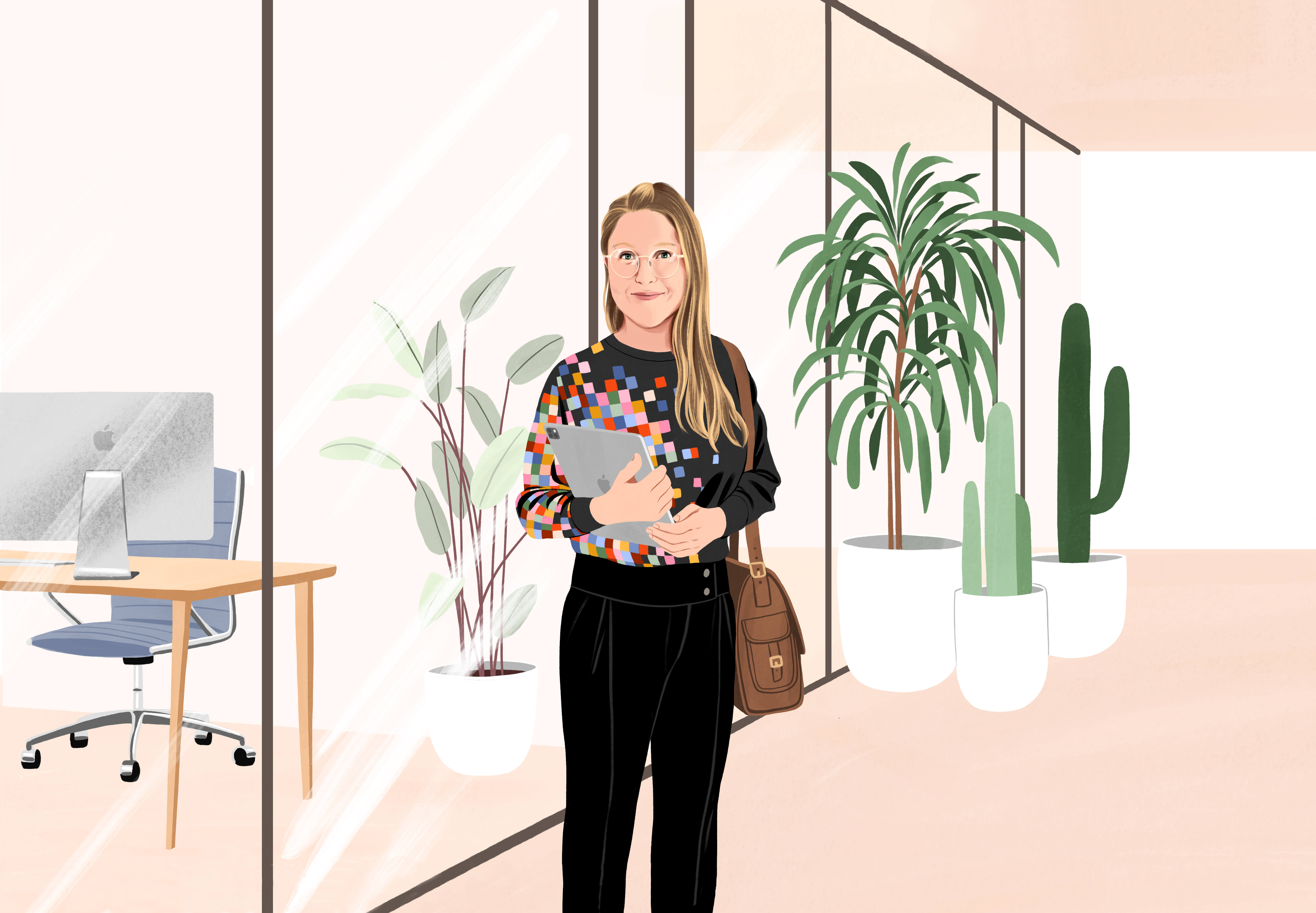
Inspiring minds by augmenting reality.
Manuela’s story
To see more women in tech, we need to reach more
girls in school.
Question: Before Apple, you worked at a place where your official title was Technical Evangelist. What exactly were you evangelizing? Answer: Apple’s iOS! I was spreading the word about how to use that company’s services on iPhone and iPad. Ever since the first iPhone, I knew that’s what I wanted to work on. So when I finally came to Apple, it felt like I was coming home.
Question: Welcome home. What kind of work are you doing as a systems engineer? Answer: I’m an app development specialist on our Enterprise Sales team. Question: Working with Apple’s business clients? Answer: Yes. I show them how to build their own iOS-based applications, often including augmented reality. Question: Sounds like you’re still a technical evangelist. Answer: Since I was 10 years old!

Question: Did you know many girls into tech at that age? Answer: Not many, and even in my career, I’ve often felt like a colorful unicorn. Question: Easy to spot and rare? Answer: Right. I’m less rare now, but still colorful. At Apple, we’ve been really working on this for a while, so globally, the number of women in R&D here has been growing, though there’s lots of room for more of us. Question: How do you keep up that momentum? Answer: We need to get to women even earlier — and we are.
We’re sparking more imaginations with augmented reality — it really feels like magic.


Question: You’re helping to train teachers, right? Answer: Yeah, for the last one and a half years now, I’ve been helping our Education team show teachers how to code and then show them how to teach code, using ARKit and Swift Playgrounds. This is something a 10-year-old can do. Question: A 10-year-old you? Answer: Almost anyone! This is working with kids as young as eight.
Question: You’re inspiring adult beginners, too. Answer: Yes, after a pause for the pandemic, I’ll continue to teach a wonderful women-only class for refugees. That one is for the women who just want the basics, but some of them have gone on to take the Python programming course afterward! Question: Sounds like you lit a few sparks. Answer: It’s so great to see them feel empowered and super proud.

Question: And in higher education, you’re working with medical schools? Answer: We’re showing them how to code Apple Watch and iPhone apps so med students can learn how their patients can share health data. Question: These are software developers? Answer: No, no — med school professors with no coding experience. They said they couldn’t do it and I said, “You’ll have your own application deployed on your phone by dinner tonight!”
I made med school professors code with me! It was amazing.